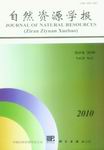Resources Ecology
GU Hui-yan, JIN Jing-bo, CHEN Xiang-wei, WANG En-heng, ZHOU Yi-yang, CHAI Ya-fan
Forest fires are frequent in the Greater Hinggan Mountain area and the intensity of these fires determines their impact on soil properties. We compared soil nutrient availability and soil nutrient ratio among three treatments (low-intensity fire, intermediate-intensity fire and high-intensity fire) and a control (intact forest) over a period of 20 years in a Larix gmelini forest in the northern slope of Greater Hinggan Mountains. The result shows: Soil pH value of topsoil (0-10 cm) in high-intensity, intermediate-intensity and low-intensity fire forest was 4.79, 4.76 and 4.63 respectively, higher than that in control forest (pH 4.53); soil pH value of subsoil (10-20 cm) in high-intensity and intermediate-intensity was 4.58 and 4.50 respectively, higher than that in control forest (pH 4.45), it was not the same case for low-intensity fire forest (pH 4.44). C concentration, N concentration, P concentration and K concentration of topsoil (0-10 cm) in high-intensity, intermediate-intensity and low-intensity fire forest was 55.19, 84.63 and 127.91 g·kg-1; 2.32, 3.97 and 5.27 g·kg-1; 0.22, 0.21 and 0.25 g·kg-1; and 31.97, 32.56 and 34.65 g·kg-1 respectively, lower than that in control forest (137.67, 5.61, 0. 27 and 37.96 g·kg-1); it was the same case for subsoil (10-20 cm), C concentration, N concentration, P concentration and K concentration of subsoil (10-20 cm) in high-intensity, intermediate-intensity and low-intensity fire forest was 39.46, 42.93 and 56.11 g·kg-1; 1.24, 1.72 and 2.31 g·kg-1; 0.19, 0.18 and 0.24 g·kg-1 ; 31.18, 31.95 and 33.83 g·kg-1 respectively, lower than that in control forest (63.11, 2.59, 0.25 and 36.16 g·kg-1); the C/N ratio of topsoil (0-10 cm) in high-intensity, intermediate-intensity and low-intensity fire forest was 23.68, 21.54 and 24.27 respectively, lower than that in control forest (C/N ratio 24.63), it was the same case for C/P and C/K ratio in topsoil, while C/N ratio in subsoil presented a weaker trend. The difference of soil C and soil N in topsoil among low-intensity fire and intermediate-intensity fire, high-intensity fire was obvious. This analysis has demonstrated that after 20 years there are still differences among the four areas of different burnt intensities in soil chemical properties.
